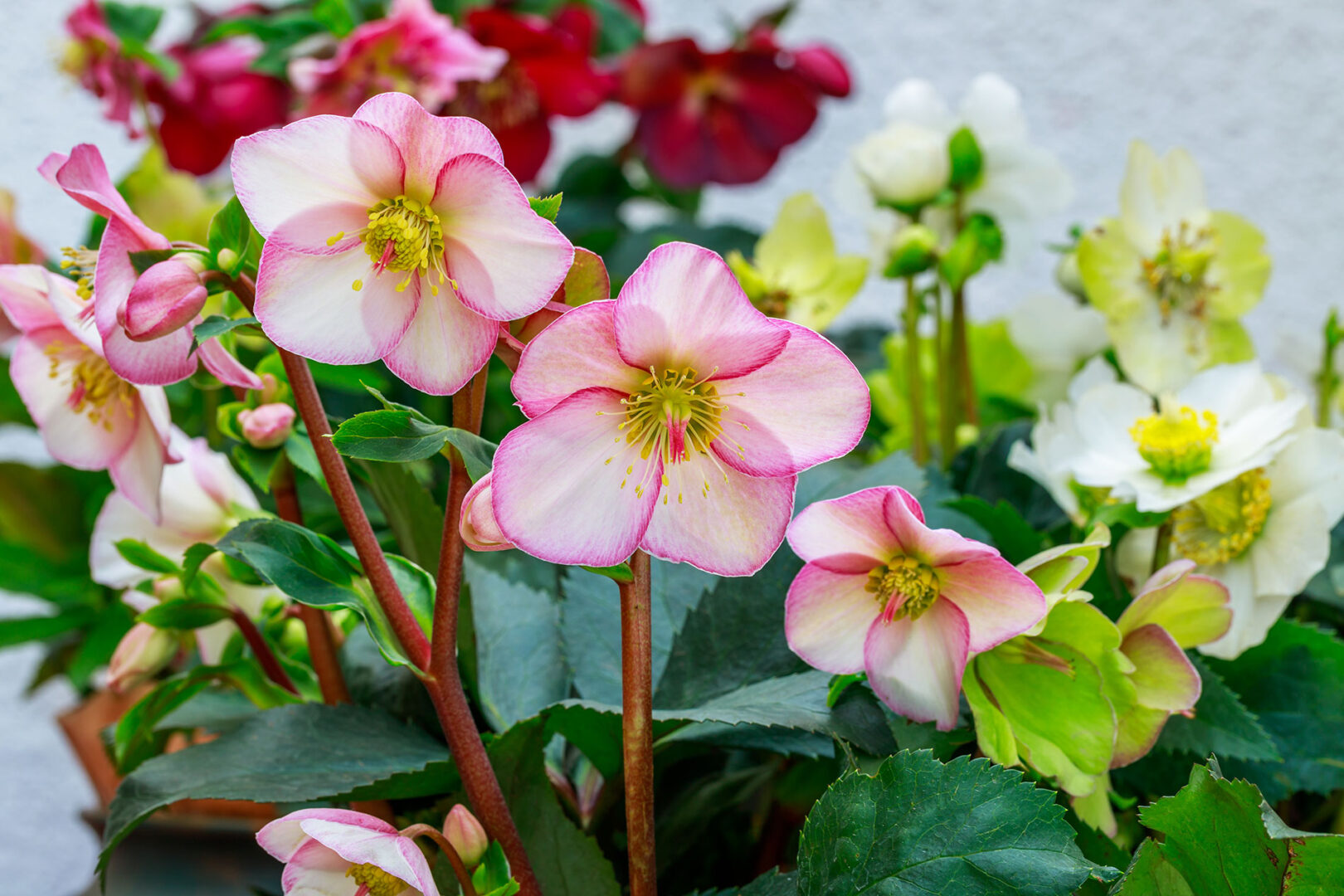Hellebores are truly winter’s most interesting evergreen perennial. We can have color from any time between December through April when nothing else is growing let alone in bloom. Not only do hellebores bloom at a time of year when we are desperate for some color, they are also deer resistant.
We just experienced our coldest January on record in our region. This extreme cold temperatures and wind chill factors have given hellebores a challenge. Most are showing some dried, dead foliage. What happened was that our ground froze in early January. With frozen ground, the roots were not able to send up moisture to the leaves. Consequently, the leaves dried up in the cold.
This past weekend I took advantage of our spring-like weather and walked around my gardens. Yes, my hellebores look terrible right now. I am sure yours may look just as bad as mine. But, in looking closer I could see new growth buds and some flowers forming. They are reviving with these sunny, warmer days that we are now experiencing. Hopefully, you can see new growth and flowers on yours as well. And, this is an ok time to remove this older, withered foliage.
Here is what you need in order to be successful in growing hellebores. First, they need some shade and grow great under a canopy of trees. Secondly, they need to be planted in a rich, compost soil that drains well. If you have an area that has these two criteria then you can plant these wonderful perennials.
There are thousands of varieties of hellebores. Every year new varieties become available to a garden center. Right now we must have 25 to 30 varieties outside in our nursery. Hellebores make great companion plants to other popular shade-loving perennials such as hostas, astilbes, ferns, etc.
If you are ready to try hellebores in your shade garden, you can plant today. Our soil is no longer frozen. Our plants are beginning to show color and new growth.
HAPPY GARDENING !!!

